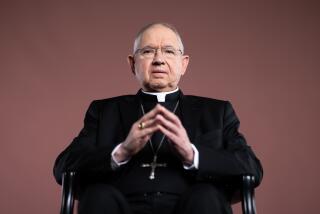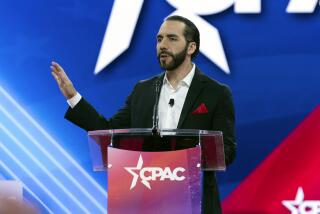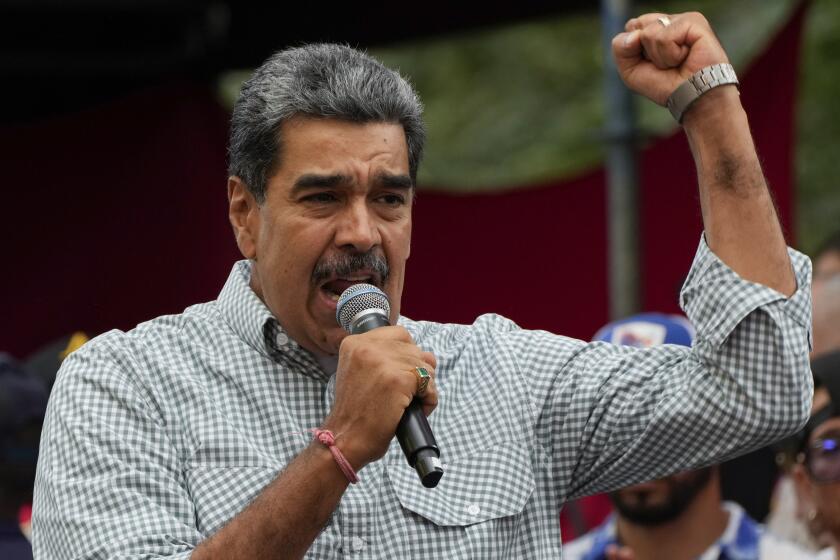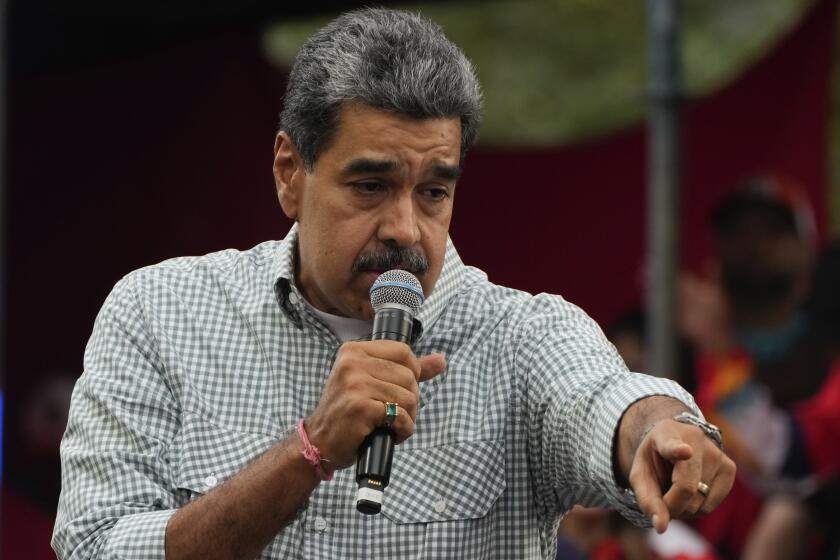El Salvador gears up for archbishop’s beatification ceremony
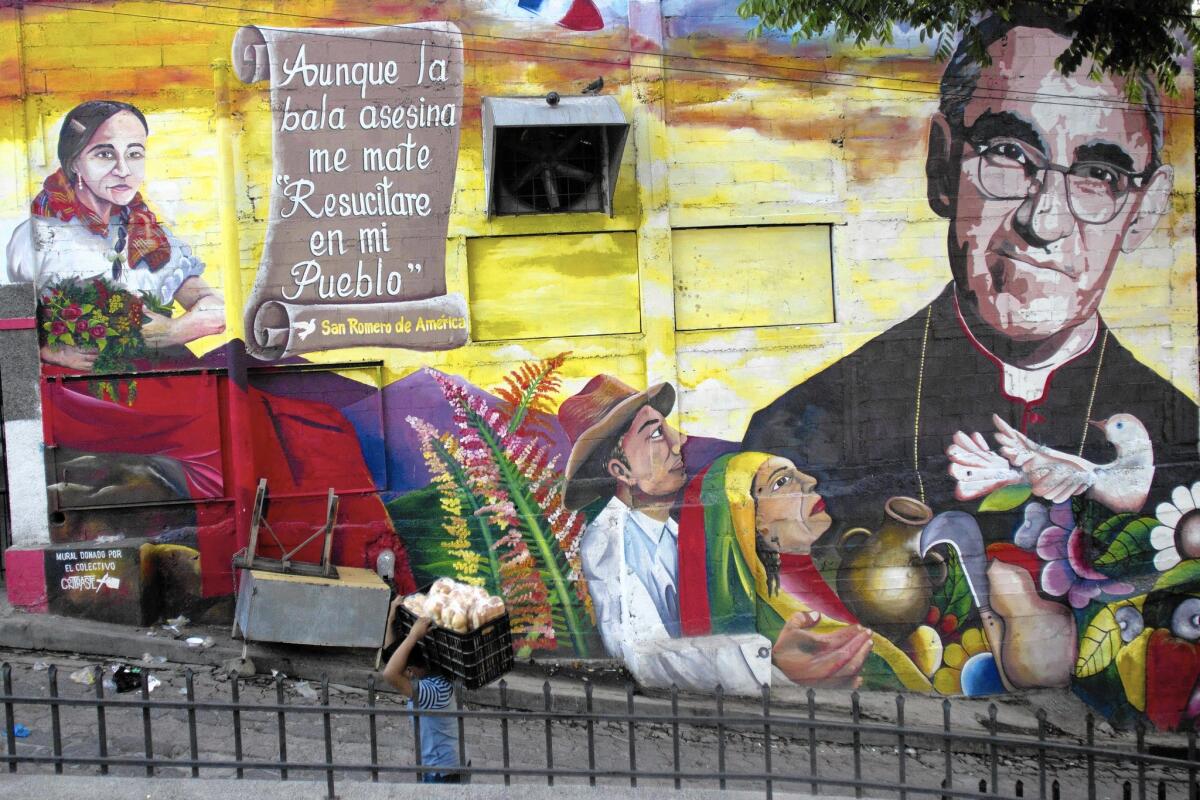
A mural of slain Archbishop Oscar Romero in Panchimalco, El Salvador. Romero will be beatified Saturday, 35 years after his assassination.
A troubled El Salvador will pause this weekend from the daily drumbeat of murder and mayhem to observe the elevation toward sainthood of one of the most cherished and controversial religious figures in the Americas, Archbishop Oscar Romero, slain by a right-wing death squad as he said Mass 35 years ago.
More than 250,000 pilgrims from all over the world are expected here to honor Romero’s beatification, a cause that was resisted for decades by conservative forces both in Central America and at the Vatican — and fulfilled finally by Pope Francis, the first Latin American pontiff, who declared Romero unequivocally a martyr.
“This is a blessing for El Salvador and for all of the Americas,” said Sister Rosario Carvajal, part of a group of nuns who traveled from Costa Rica for Saturday’s ceremony. “Msgr. Romero was a prophet in our times. He knew he was in danger, but he spoke out about so many wrongs.”
Eva Vides, a 78-year-old retired teacher, wept as she visited the small bedroom where Romero lived. It is now a museum and shrine, containing his simple bed and the battered electrical typewriter on which he wrote his famous sermons.
“All his life was dedicated to the poor and to trying to make society more just,” the San Salvador resident said. “That’s why they had to silence him.”
Romero’s assassination on March 24, 1980, in many ways signaled the start of El Salvador’s civil war. When the war ended 12 years later, after more than 75,000 people were killed, a United Nations-sponsored Truth Commission determined that Maj. Roberto D’Aubuisson, founder of both the death squads and the right-wing Arena political party that would rule El Salvador until 2009, was responsible for the slaying.
By then, D’Aubuisson had died of cancer. He never faced charges in Romero’s death.
D’Aubuisson had been working closely with a small group of extremely wealthy Salvadoran landowners and coffee tycoons who saw Romero’s advocacy for the poor as a direct threat to their business interests. They, with D’Aubuisson, would examine Romero’s weekly homilies for evidence of his purported leftist tendencies to build a case that he was a dangerous subversive. Romero ended each sermon with a litany of the killings, kidnappings and tortures committed that week, mostly by government security forces.
The final straw came in what would be his last homily, when, a day before a sniper’s bullet pierced his heart, Romero called on soldiers to disobey their officers’ commands that they kill and brutalize common citizens and impoverished peasants. A long-standing plan to assassinate him was activated.
“That was the spark,” a former member of the death squads told The Times. “But the gunpowder was already set and the match poised to light the fuse.”
The man spoke on condition of anonymity because he fears reprisal from his former associates, who he said have sworn among themselves to not discuss the Romero assassination, especially now. He said D’Aubuisson and the death squads later realized the slaying was a mistake, in part because it galvanized the left and drove legions of supporters into the ranks of the guerrilla forces fighting El Salvador’s conservative and repressive economic and military elite.
The wealthy landowners and business leaders who the former death-squad member said ordered the assassination have never been held accountable, many of them are still running vast financial empires.
As the country was sliding into civil war, the faithful would listen to Romero’s sermons, broadcast live on the church’s radio station, which Romero had transformed into a social-activist sounding board when he became archbishop of San Salvador in 1977.
“He was an irritant, an irritant for the oligarchy and the military,” said Father Walter Guerra, a Salvadoran who worked at Romero’s side in the last years of his life. Ironically, the elite had favored Romero’s ascension to the archbishopric because they believed he would be meek and malleable. They were wrong.
Although revered in much of El Salvador — and the rest of Latin America — Romero remains a somewhat divisive figure. A small but powerful minority continues to view him as a subversive, more politician than priest, who exhorted the left into war.
“He was manipulated by the Marxists,” said Gerardo Escalon, a cofounder of Arena and former congressman who opposes the beatification. Romero was partial and never mentioned the victims of the left, Escalon said.
More than two decades after the civil war, the small country of 7 million is polarized, almost as poor as ever and experiencing a horrific wave of gang violence, police crackdowns and other bloodshed that is claiming record numbers of lives. An average of nearly 30 people a day are being killed this month, according to police figures, twice the total in March in a country with a population smaller than Los Angeles County’s.
“I’m doing the same thing I was doing 40 years ago, feeding starving elderly people and campesinos” in coffee fields who earn less than $4 a day, said Guerra, the priest. “Dogs live better.”
Guerra had just buried five slaying victims a few days before. “I’ve lived prewar, war and now postwar. We are the same, maybe worse. Where is the social justice that thousands died for,” Guerra, 72, added, blaming the left that has ruled El Salvador since 2009 as much as the economically entrenched right.
In declaring Romero a martyr, the pope said the Salvadoran died because of hatred of his faith. Normally, to be beatified, a miracle must be attributed to the dead person, but martyrdom obviates that step. A miracle will have to be attributed to Romero’s intercession for him to be canonized, or elevated to sainthood.
Sister Lucia Sanchez, 77, remembers Romero’s visits to Ciudad Barrios, the modest town where she served for decades. He’d meet with parishioners, hug children, accept gifts of hens or the occasional pig. She also recalls the gun and grenade attacks that interrupted Romero’s funeral, killing several dozen and sending her and other mourners scattering for cover.
“They say he was shy in the beginning,” she said, “but I believe he was truly chosen by God.”
The elderly nun spoke in the garden outside Romero’s former residence, down the hill from the Divine Providence chapel where he was slain. Listening to her intently was a group of 15-year-old girls, part of the generation that knows little about Romero. But with his beatification, as a class project at their Catholic school, the girls were studying the priest’s life and said they had become inspired.
“The situation here [in El Salvador] is very terrible,” said ninth-grader Alma Aguilar. “With a figure like Msgr. Romero to follow … maybe the country can change.”
The girls said goodbye to the nun and then ran off into the museum, snapping photos of the Romero relics — his bloodied cassock, his old cassette tape recorder — with their iPhones.
More to Read
Sign up for Essential California
The most important California stories and recommendations in your inbox every morning.
You may occasionally receive promotional content from the Los Angeles Times.
